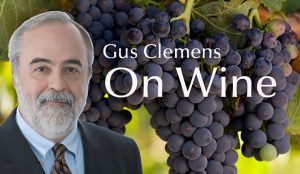What is this “Old World” “New World” wine thing? Some cartographic elucidation.
Old World refers to countries that have made wine for centuries and usually have strict rules about how do it: France, Italy, Spain, Portugal, Germany, Austria easily come to mind, but don’t forget Greece, Hungary, Turkey, Armenia, Slovakia, and Georgia (the country, not the state).
New World refers to wine made everywhere else: United States, Chile, Argentina, South Africa, Australia, New Zealand easily come to mind, but don’t forget China, India, Japan.
For the most part, the styles are slightly different. Old World wines typically are lighter, have less alcohol, greater acidity. Part of that is because many of their grapes grow in slightly colder regions, but also because of tight regulations.
New World wines typically are more fruit forward and have higher alcohol. Part of that is because their grapes grow in slightly warmer climates, but also because pretty much anything goes if a New World winemaker can find a niche drinkers will drink.
Old World wines generally have labels identifying where the wine comes from, so sauvignon blanc in France is called Sancerre or Pouilly Fumé although the difference is the sauv blanc grapes grow across from each other on the banks of the Loire River.
In the New World, Robert Mondavi was early pioneer in labeling the varietal predominantly used in the wine so consumers would have easier way of knowing what they were buying. But even Mondavi freaked about the reputation of plonk sauv blanc in the 1960s, so he labels his sauvignon blanc “Fumé Blanc.”
Then came Aussies and California hipsters, and critter names—Yellow Tail—and “what the heck?” names like Walking Dead Blood Red, Ménage à Trois, Marilyn Merlot.
Do all wines fall into these categories? No, of course not. Furthermore, as wine markets go global they cross-pollinate each other. For instance, Tuscany’s Il Bastardi and Sicily’s La Bastrarda play on fanciful backstories about dubious conjugal situations. Not sure what that tells you about the wine.
In the New World, there is movement to stress “terroir” in manner of the Old World, especially among higher-end wines in elite vineyards in California, Oregon, and Washington. Today’s recurrent bottom line in wine: more of it, better made than ever before.
• Robert Mondavi Fumé Blanc, Napa Valley 2016: Legendary, breakthrough effort demonstrated sauvignon blanc excellence to Americans. $19-22 Link to my review
Last round: I really do not understand the concept of a “wine stopper.”

